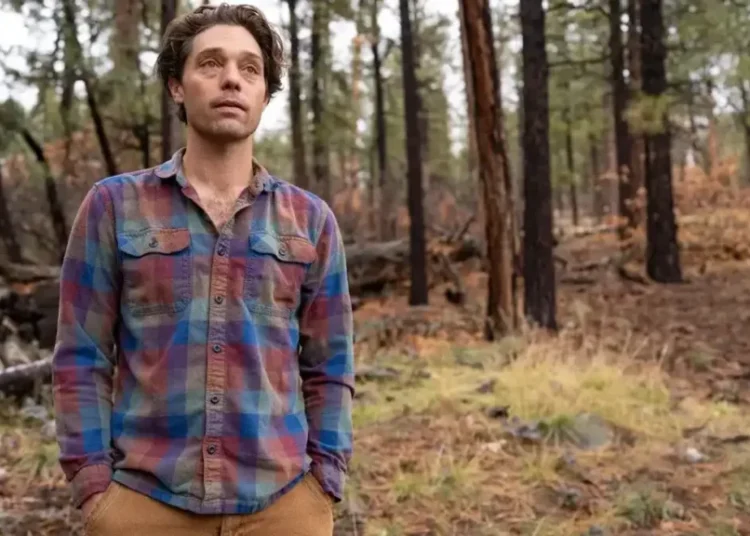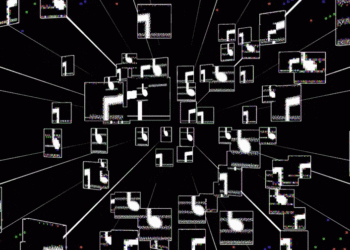A staggering water shortage this year is throwing Iran’s future livability into question, with dozens of dams close to empty, residents of Tehran facing the possibility of running out of water within weeks and the president even floating the idea of evacuating the capital, though it is unclear where those millions of people would go.
A historic lack of rain and an ongoing five-year drought have helped bring Iran to the brink. But the current crisis has its roots in high-level policy decisions taken over the decades to bolster the country’s agriculture, including with intensive irrigation, to make Iran largely self-sufficient in food — at the cost of nearly all of the country’s precious water resources.
Iran’s government has guaranteed the purchase of certain crops, including water-intensive ones such as rice and apples, subsidized fertilizer and other agricultural inputs, and provided cheap loans for farmers. The government has also allowed the drilling of wells that sucked out increasingly depleted groundwater for farms across arid and semiarid parts of the country. Even in cases where drilling was not allowed, the government was often unable to stop unauthorized wells, researchers have found.
Together, those policies and others helped to nearly double the amount of irrigated land in Iran since the 1979 Islamic revolution, to over 22 million acres.
“The government effectively sold its natural capital, water, soil fertility and resilience to achieve a kind of short-term output,” said Nima Shokri, director of the Institute of Geo-Hydroinformatics at the Hamburg University of Technology in Germany.
Inside Iran, some critics are calling on officials to completely rethink their approach to agriculture policy, pleading with them to take the crisis as a sign of the need for change. But doing so, some experts said, would require deep changes in the country’s relations with the outside world.
Agricultural jobs remain vital because Iran has been unable to further develop and diversify its economy, in part because of Western sanctions imposed over its pursuit of a nuclear program. These jobs have accounted for as much as a quarter of the country’s employment at any given time, according to figures compiled by Stanford University’s Iran 2040 Project.
“Right now we are ruining the environment, we are consuming the next generation’s rights, for international political reasons,” said Isa Kalantari, a former longtime Iranian agriculture minister and later a director of the Environment Department, in a debate posted to YouTube last month. “Who said that we have to be in a fight with the whole world?”
A spokesman for Iran’s mission to the United Nations did not respond to detailed questions.
The well runs dry
The results of the government’s pro-agriculture policies can be seen in the experience of Sajjad, a farmer whose family grows apples and grapes across 70 acres in the foothills of the Zagros Mountains in south-central Iran.
He said his family chose to plant apple trees on their land partly because the government under Mahmoud Ahmadinejad, president from 2005 to 2013, encouraged them to do so, offering loans and saplings. He and other farmers spoke on the condition they not be fully identified for fear of reprisal for speaking to a foreign reporter.
Ahmadinejad’s government, he said, also allowed farmers in their area to dig wells, which were previously prohibited. Ahmadinejad’s critics have accused him of being reckless with the country’s water resources during his presidency, pointing to a spike in the number of permitted and illegal wells dug during his tenure. Like others, Sajjad’s family dug one to nourish their crops. But the well went dry after a year and a half.
Iran’s clerical rulers have long argued that Iran could not trust the outside world, particularly the West, to ensure the country could feed its people. Western support for Iraq during its brutal war with Iran in the 1980s only bolstered that mistrust.
Ayatollah Ruhollah Khomeini, the founder of the country’s Islamic government, once said that Iran’s agriculture “must be the basis of everything.” His successor, Ayatollah Ali Khamenei, has said that Iran had to provide its own food so that it is not subject to the whims of “the world’s bullies.” And one oft-repeated slogan popular among Iranian officials is that “farming is the axis of economic development.”
“It’s a sanctioned economy in a resistance mode, and in a resistance mode all they can do is burn resources to create employment opportunities,” said Kaveh Madani, a water expert who resigned as deputy director of Iran’s Environment Department and left the country in 2018 after facing intense pressure from hard-liners. “If you can’t create jobs in industry or services, if you can’t diversify your economy, then you can’t decouple your economy from water.”
Iran’s annual water usage — about 8o to 90 percent of which goes to agriculture — is higher than its total renewable water resources and far higher than the threshold considered sustainable, according to a 2018 paper by the Stanford Iran 2040 Project. Iran is one of the highest-ranking countries in groundwater usage, its land is sinking at an alarming rate and its soil is growing saltier, according to scientific research.
A historic drought
Climate change has exacerbated the crisis by reducing rainfall, further shrinking Iran’s renewable water resources. The drought is certainly extreme. At least 32 of Iran’s dams are below 5 percent capacity, local media has reported, and rainfall for the first 53 days of autumn was 83 percent lower this year than the long-term average.
“One of the factors that is very important is that we never had a drought of this magnitude or length before in recent history,” said Madani, who is now director of the U.N. University Institute for Water, Environment and Health. “We can’t say the drought is not at fault. We have to be fair.”
But drought is merely worsening the core underlying issues, experts said. “Climate change and lower rainfall definitely play a part, but they simply can’t explain the scale of the water crisis we’re seeing now,” said Mohsen Mesgaran, an agroecologist at the University of California at Davis who co-authored the 2018 Stanford paper.
Iranian officials have tended to emphasize the historic nature of the current drought or called for technological solutions rather than advocating wholesale changes in policy.
Mesgaran, who grew up in a farming family in northeast Iran, said that even if officials wanted to scale back agriculture and thus risk millions of jobs, the government lacks the popular legitimacy needed to make such a painful change.
Iran’s government has faced round after round of protest over the past 15 years, often sparked by economic discontent. Some protests have focused on water, particularly over government policies to redirect resources from one area to another. Though the water shortage has sparked some isolated protests since this summer, there has not been a widespread uprising over the issue.
For now, Iran remains devoted to food self-sufficiency. Last year, its parliament approved a five-year development plan that called for 90 percent of basic food products — wheat, barley, rice, legumes, red and white meat, and sugar — to be domestically produced.
Peyman Falsafi, vice-chairman of the parliament’s agriculture, water, and natural resources commission, sparred with Kalantari in the debate posted to YouTube last month. During his remarks, Falsafi said Iran could rely on Chinese technology and investment to update its agricultural sector and increase yields. He also pointed to the Israeli bombing of Iran during the 12-day war earlier this year and Palestinian starvation caused by Israel’s siege of Gaza as evidence for why Iran must provide its own food. “Today, farming and food are used as weapons,” he said.
Failing crops, deeper wells
Where the government appears unwilling to change course, nature may have the final say.
For their apple and grape orchards, Sajjad’s family transports water via tankers, which they fill from the municipal water supply. He estimated they use about 850 gallons of water this way per week.
Still, it’s not enough.
“We irrigate, but no matter how much water we give, the land needs more water,” he said. “The land is dry.”
This year, their apple harvest failed completely, which he attributed to a lack of rain. The apples were puny and too low-quality to sell, so they gave away half to friends and family and used the rest as feed for their goats. His father is now considering ripping out the apple trees and planting something else, Sajjad said, though he is waiting to see if they get any rain before making a final decision. Sajjad has taken a second job to meet his expenses and those of his siblings.
Even in the relatively water-rich north of Iran, farmers are suffering. Hassan, a wheat farmer in Gilan province on the coast of the Caspian Sea, said his crops were once nourished solely by harvested rainwater. That changed in the past three years, and insurance companies in the area have stopped insuring wheat crops, he said. “Wheat cultivation is basically disappearing,” he said.
Farhad, a farmer near the north-central town of Takestan — whose name means “vineyard” and which is renowned for its grape cultivation — grows wheat, tomatoes, grapes and fruit trees on a small farm of about 10 acres. Farmers in the area rely on electric wells for water, so electricity outages due to reduced hydroelectric power amid the drought have disrupted irrigation, Farhad said. That in turn has cut his harvest significantly.
There are also ominous signs that the groundwater in his area is being depleted. Two decades ago, farmers could access water at a depth of 25 or 30 meters (82 to 98 feet), he said. Now, they are regularly being forced to drill to 150 meters (nearly 500 feet).
“Almost all the whispers are that in two or three years,” he said, “we won’t have any water.”
The post Taps are running dry in Iran. Decades of bad decisions are to blame. appeared first on Washington Post.




